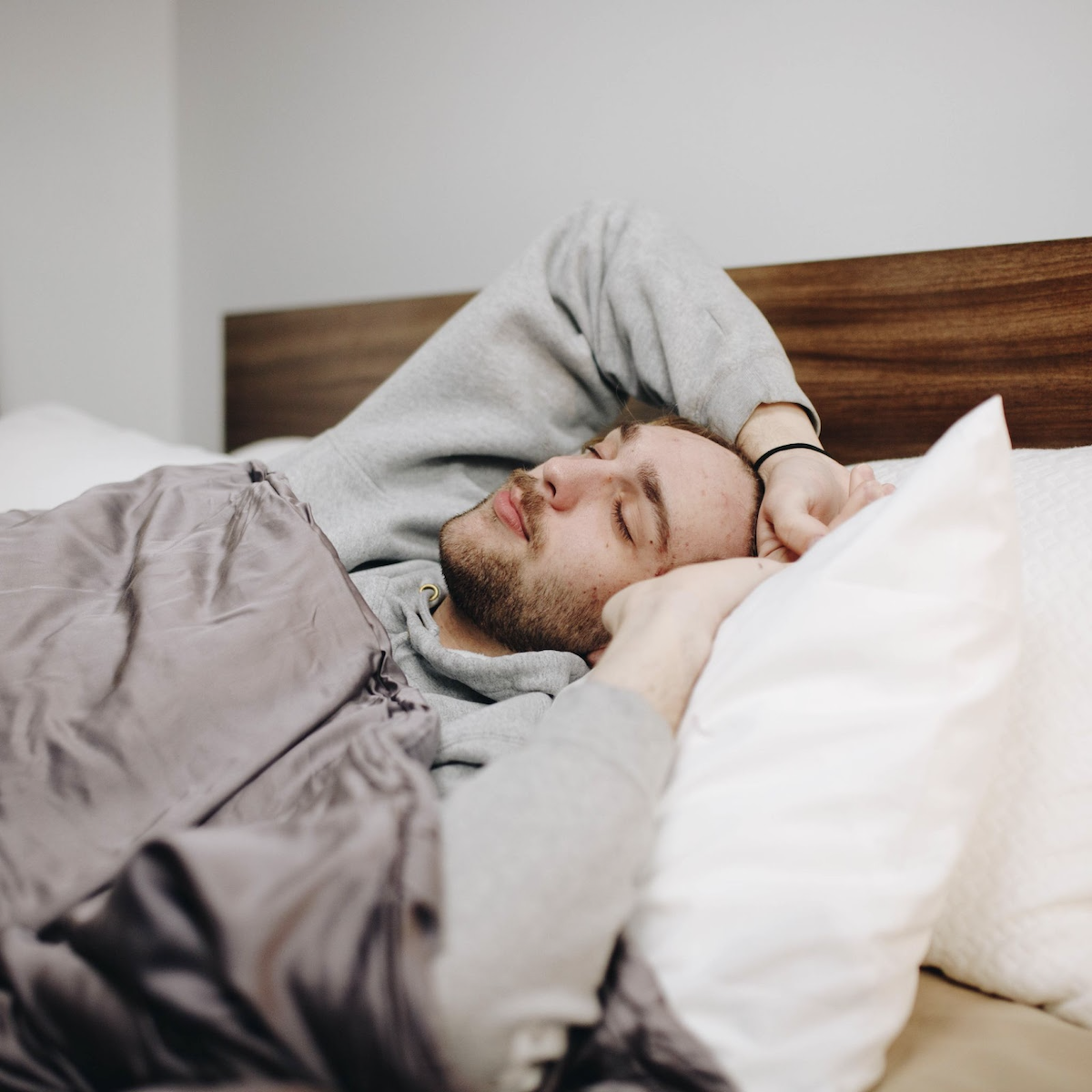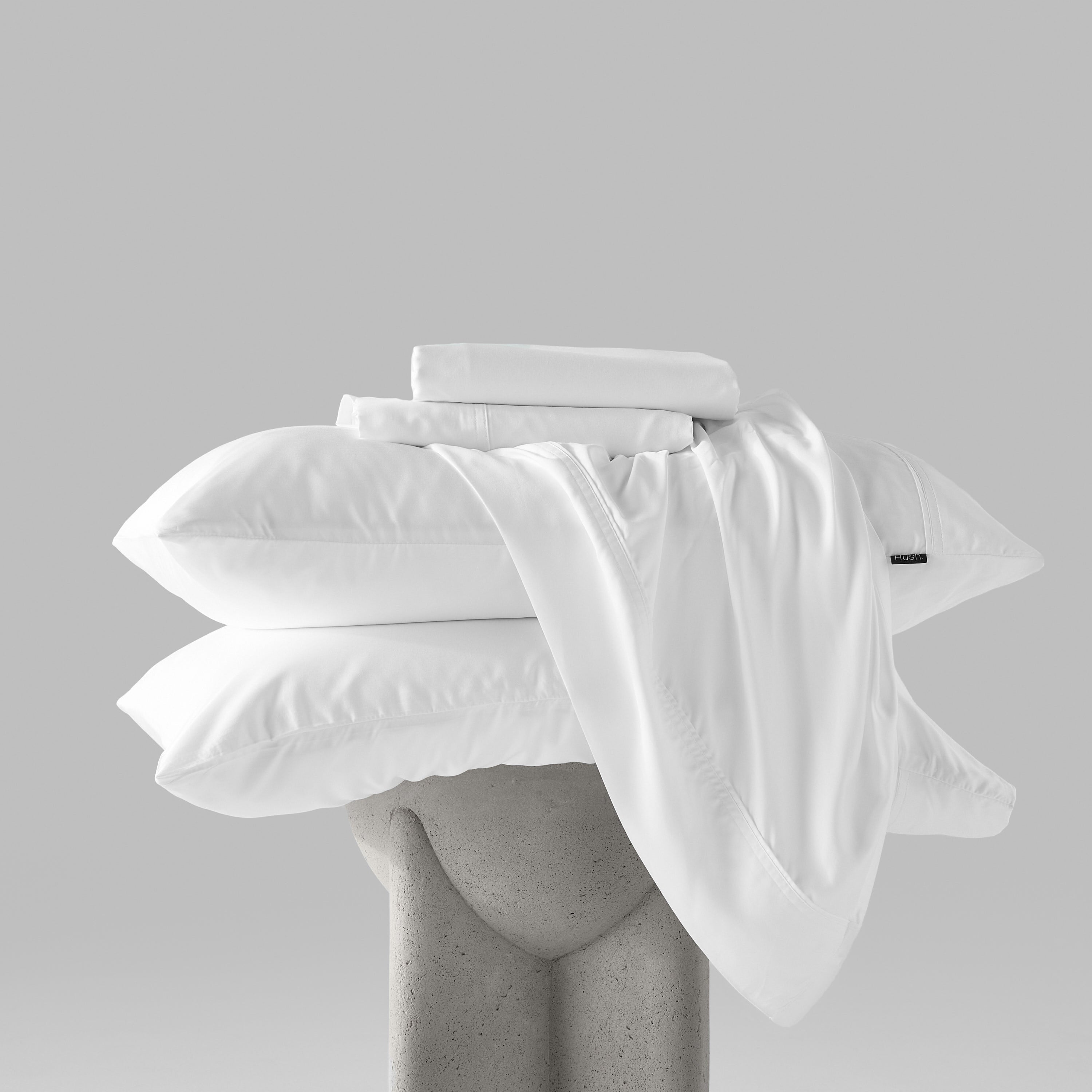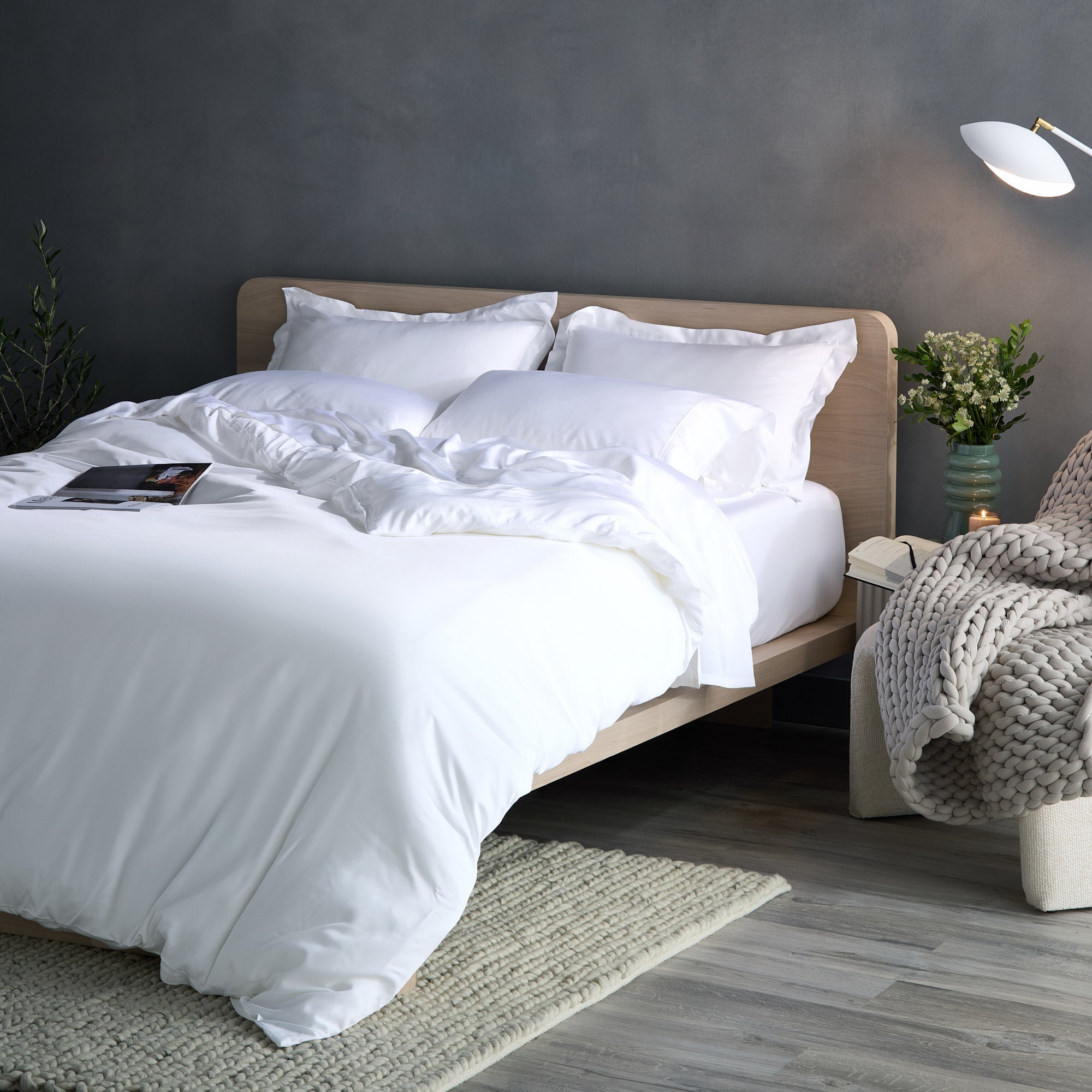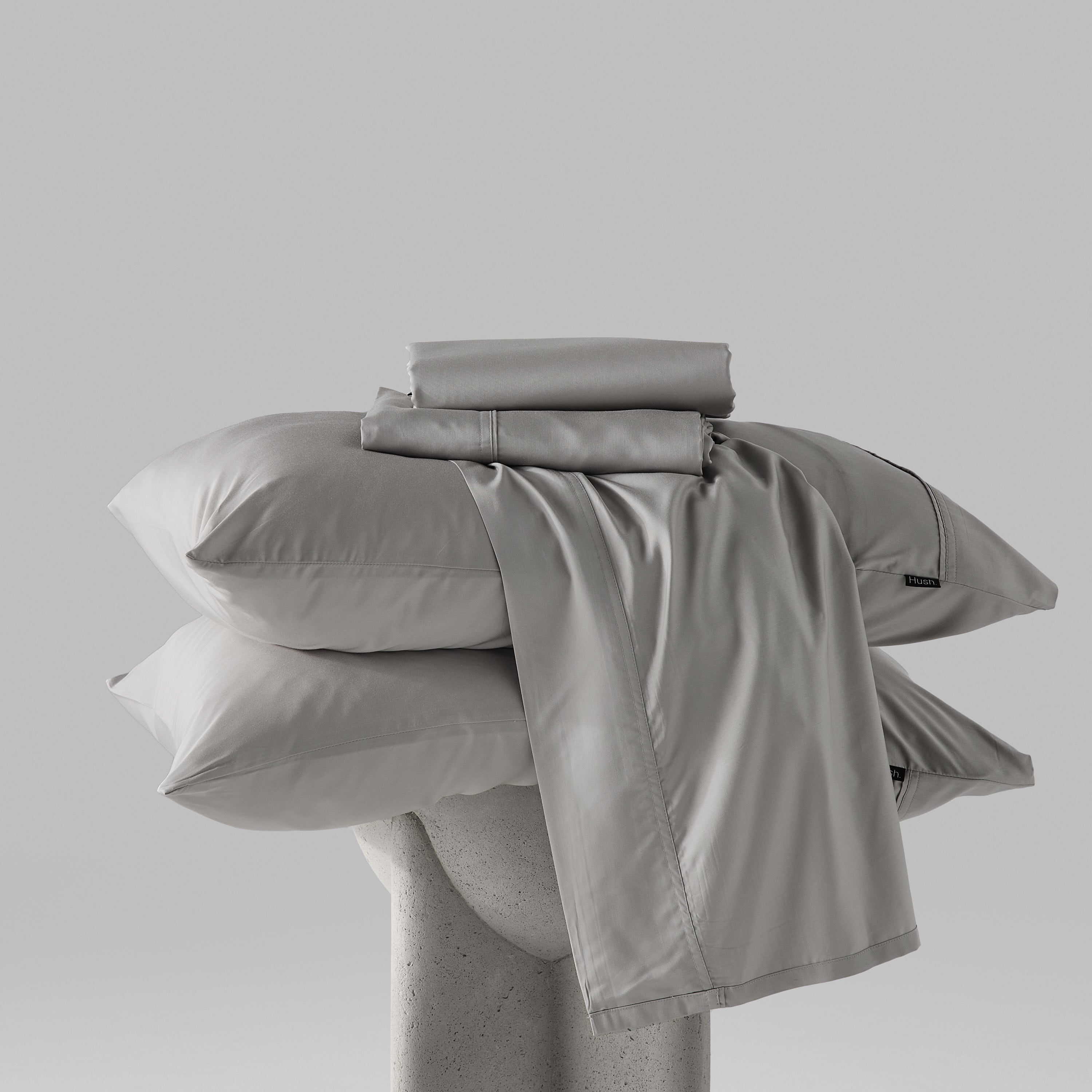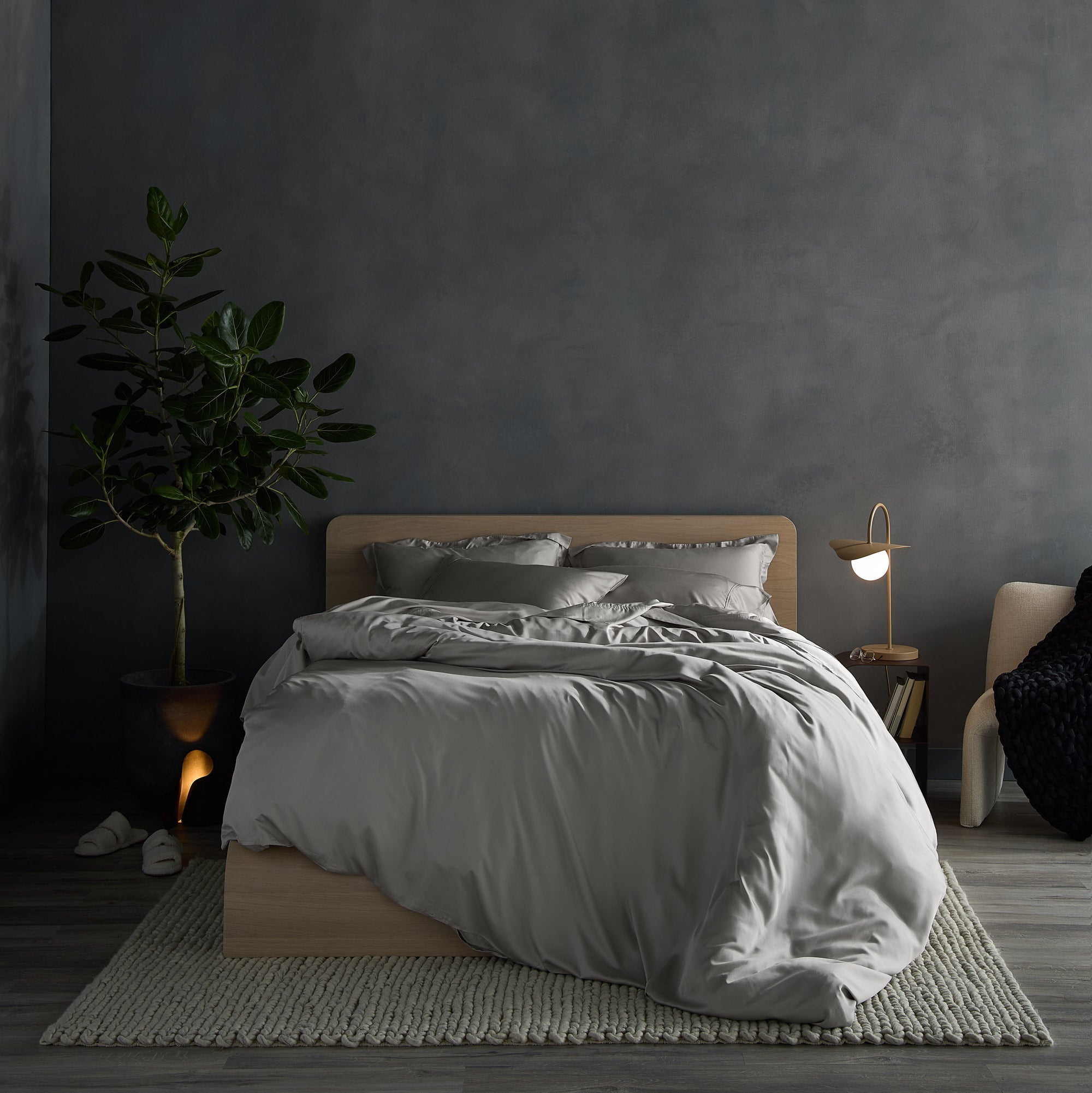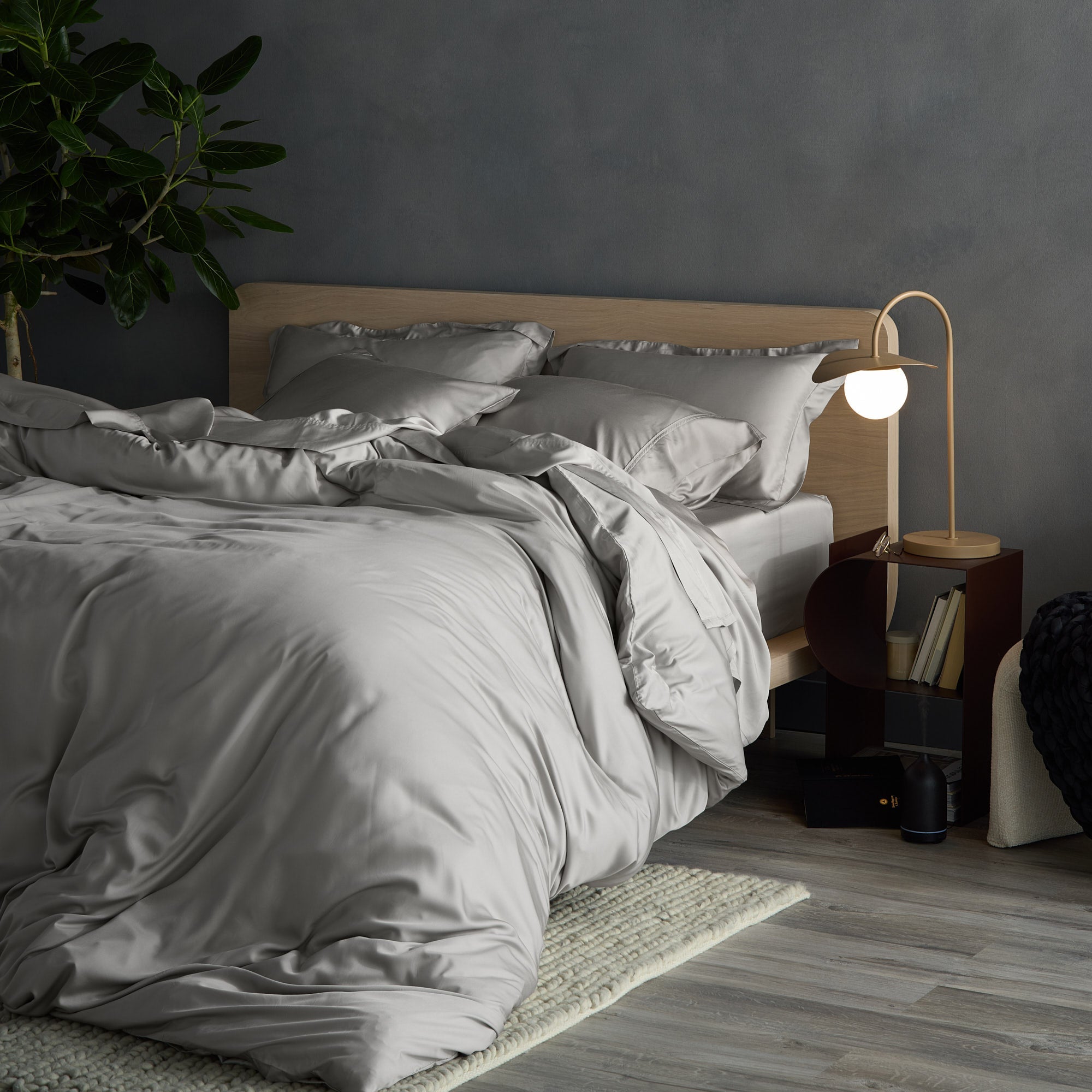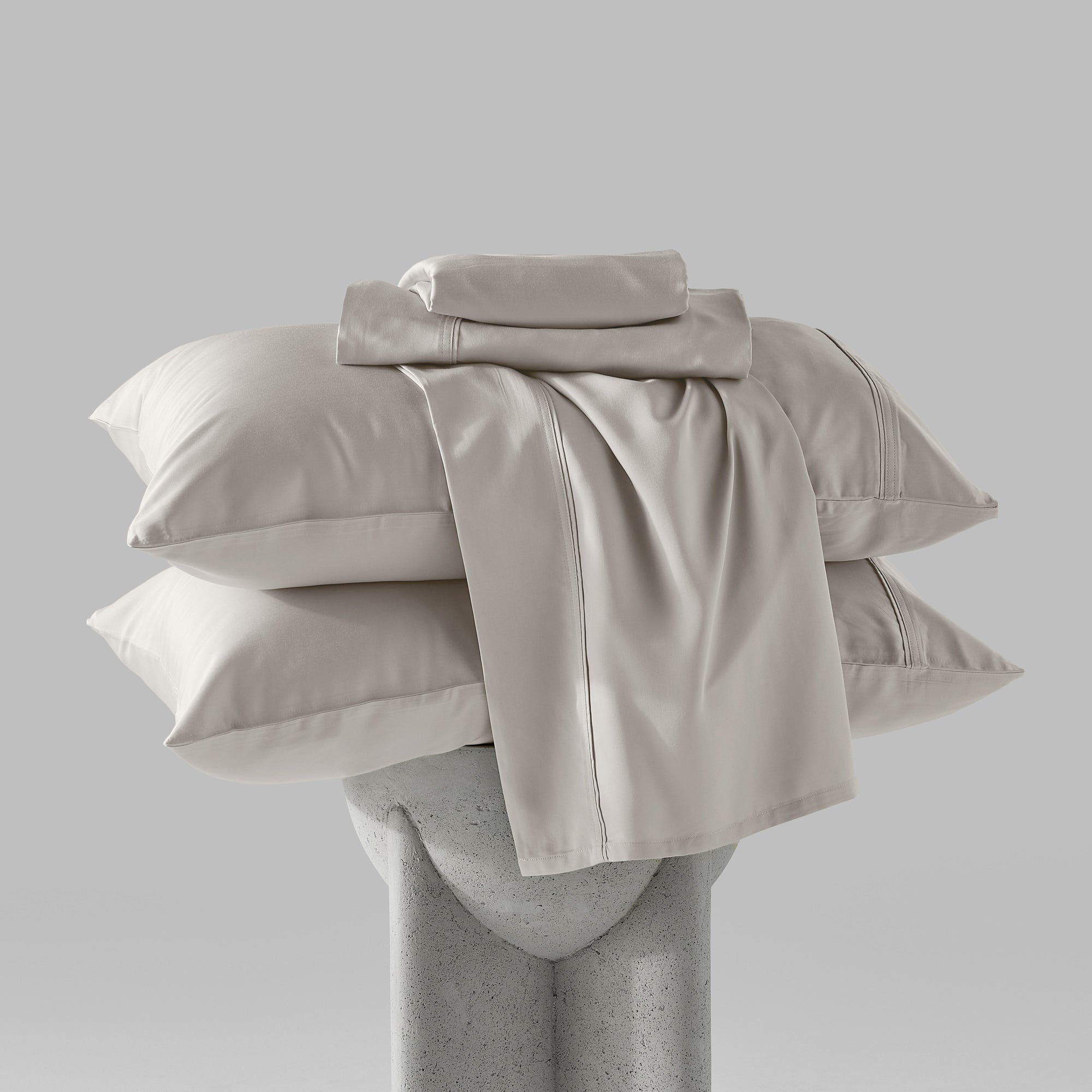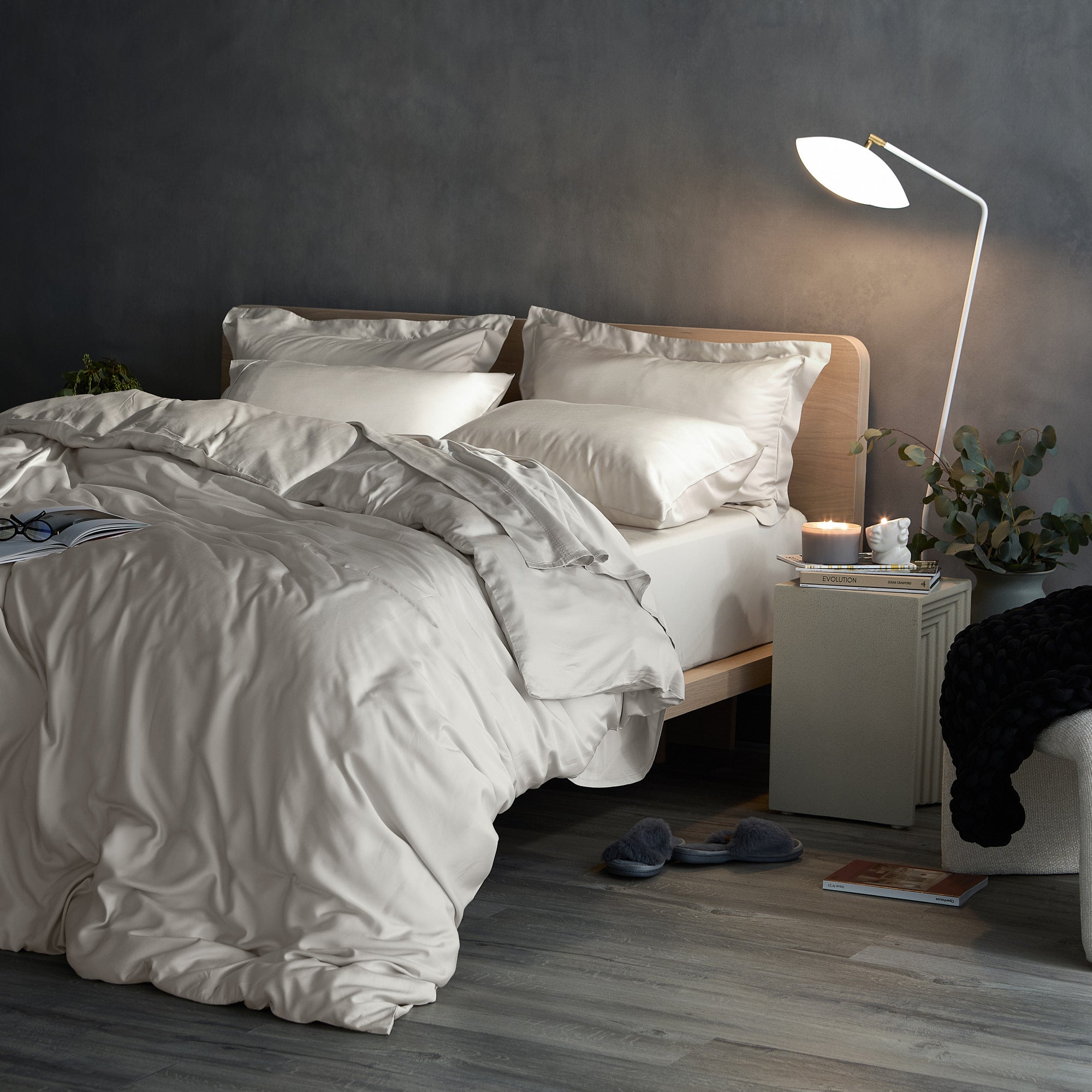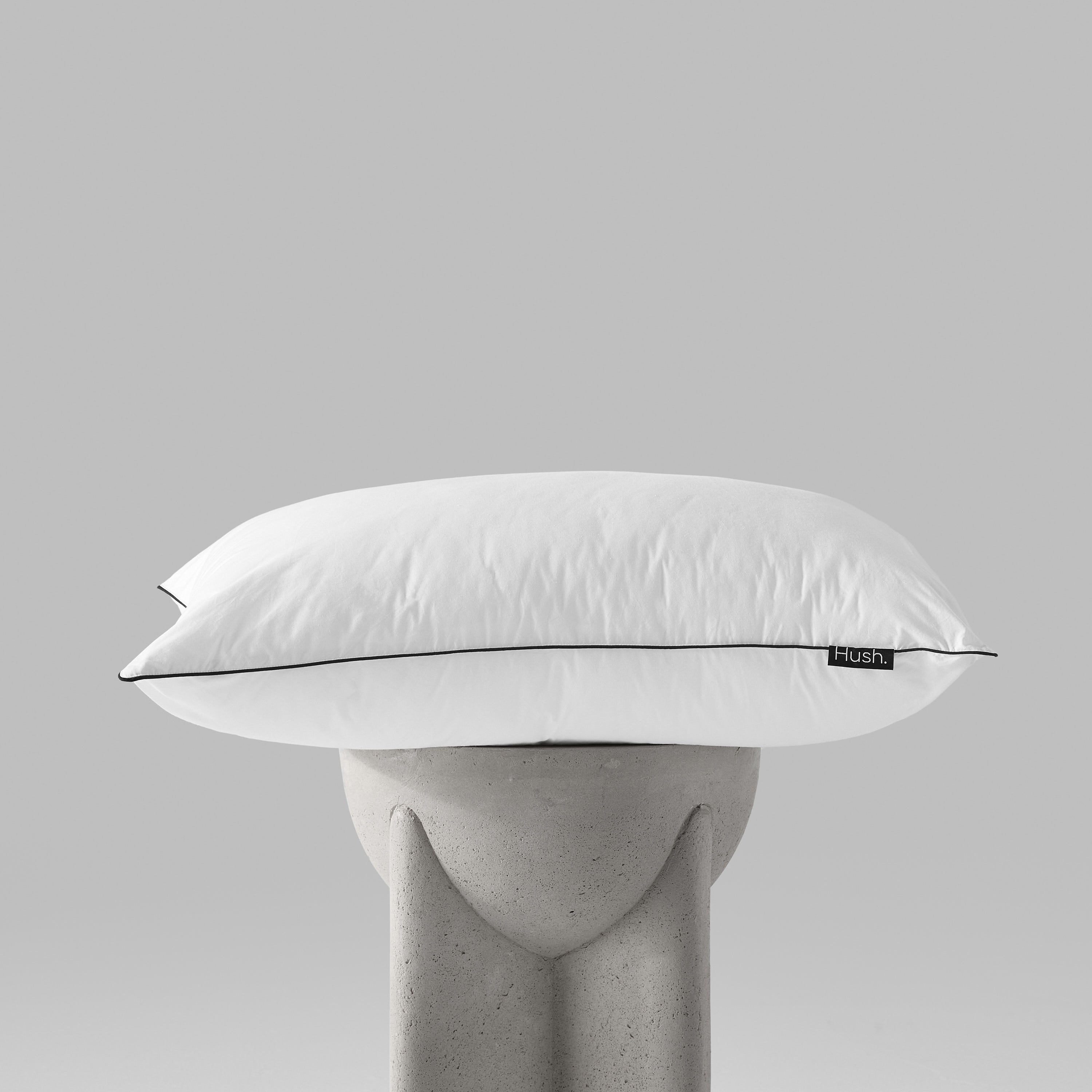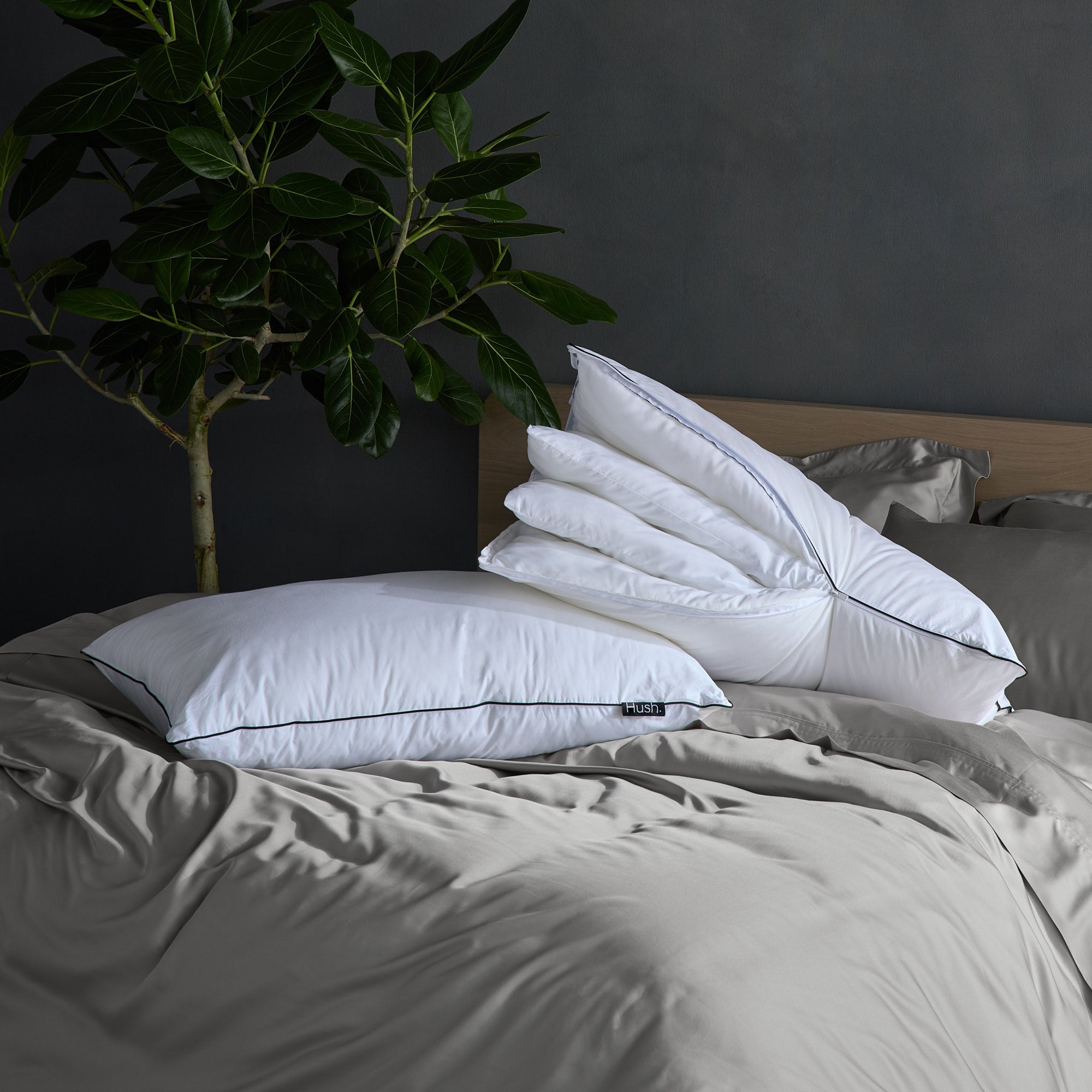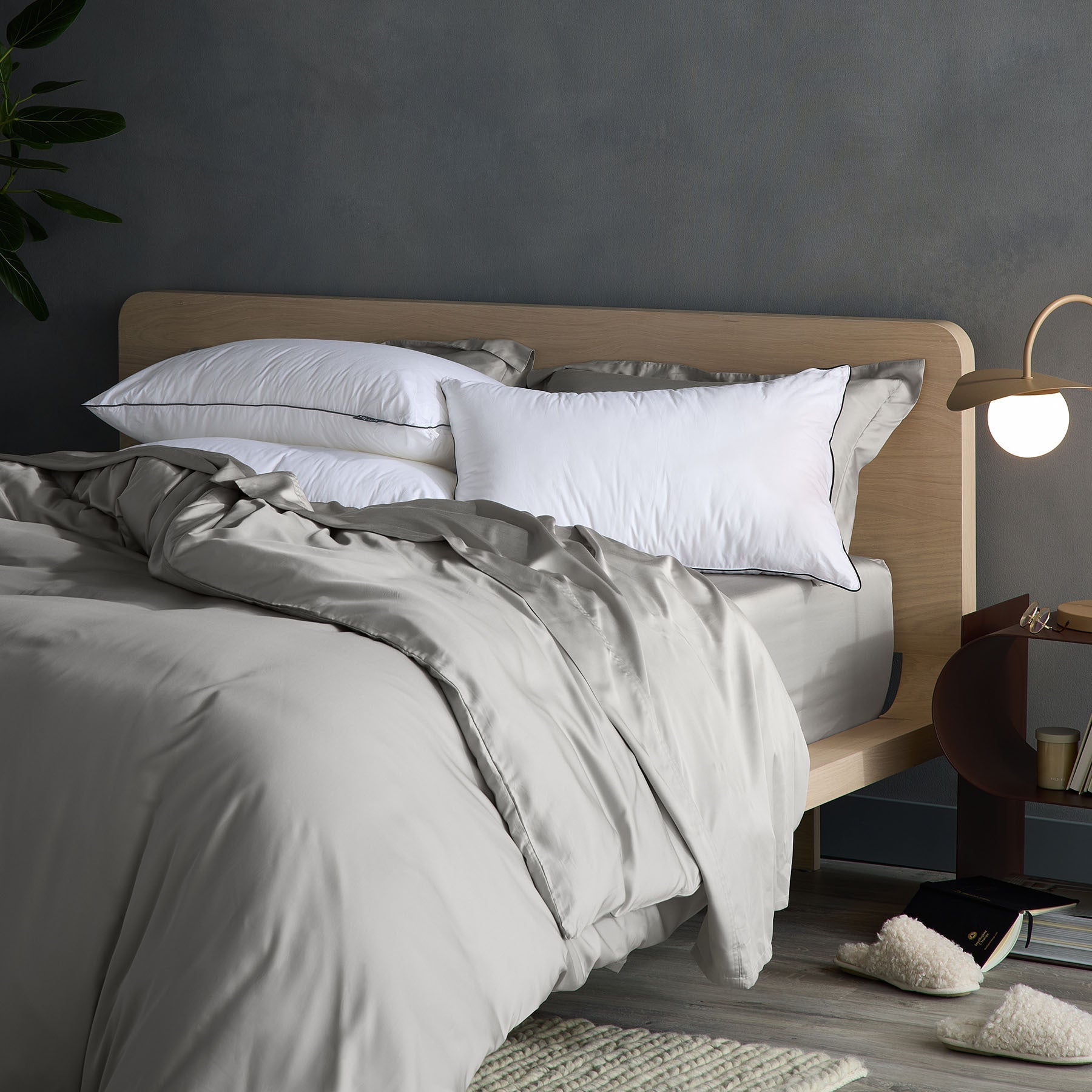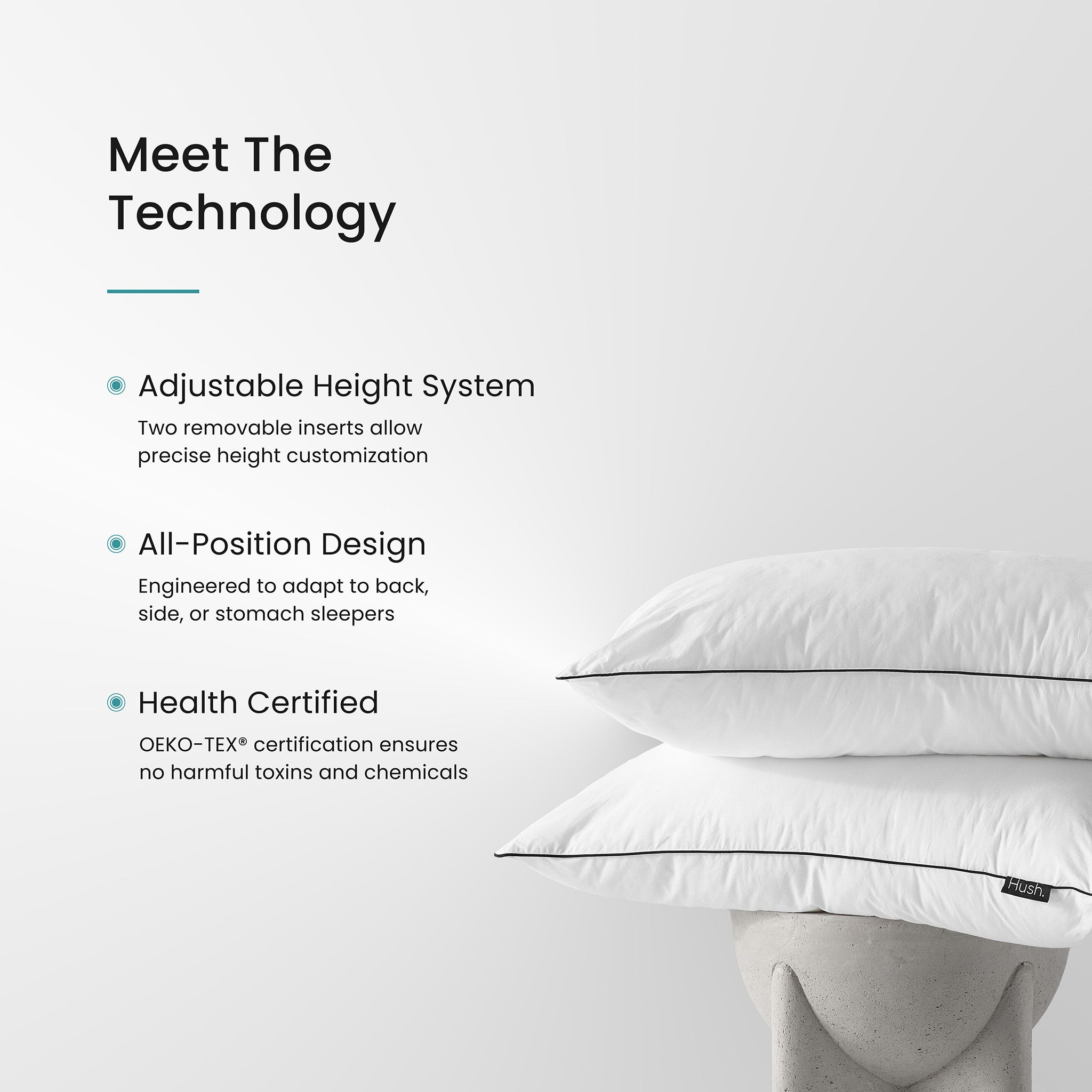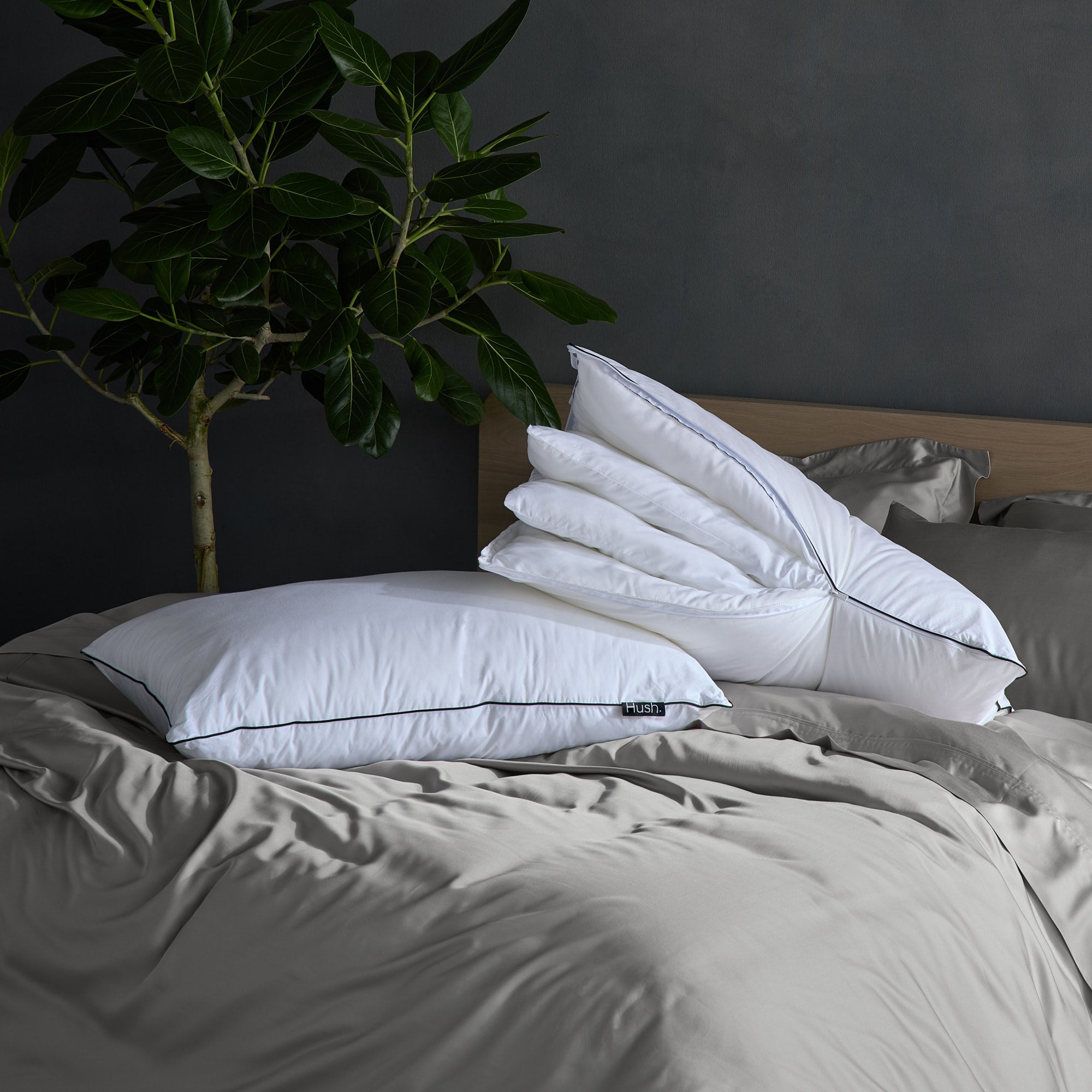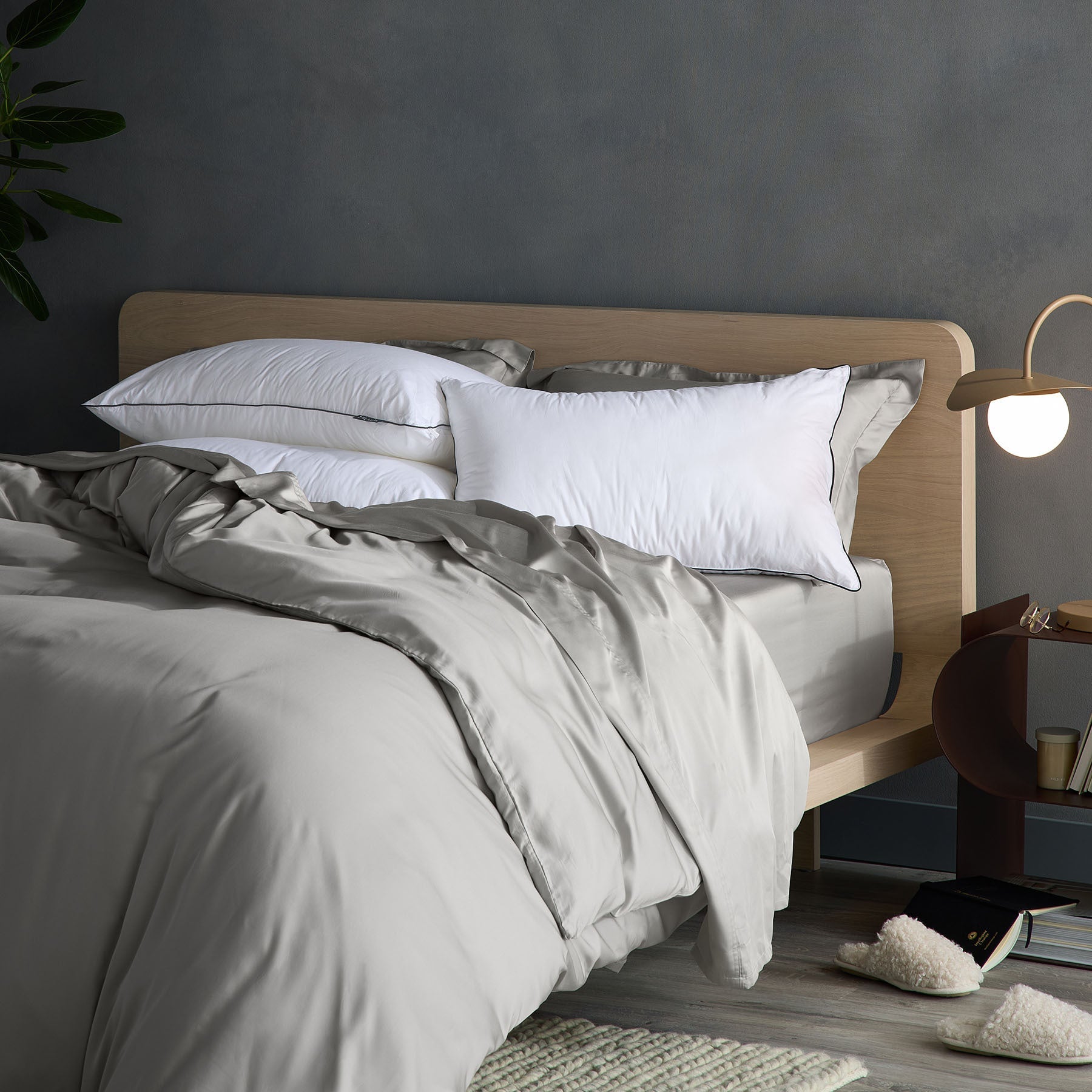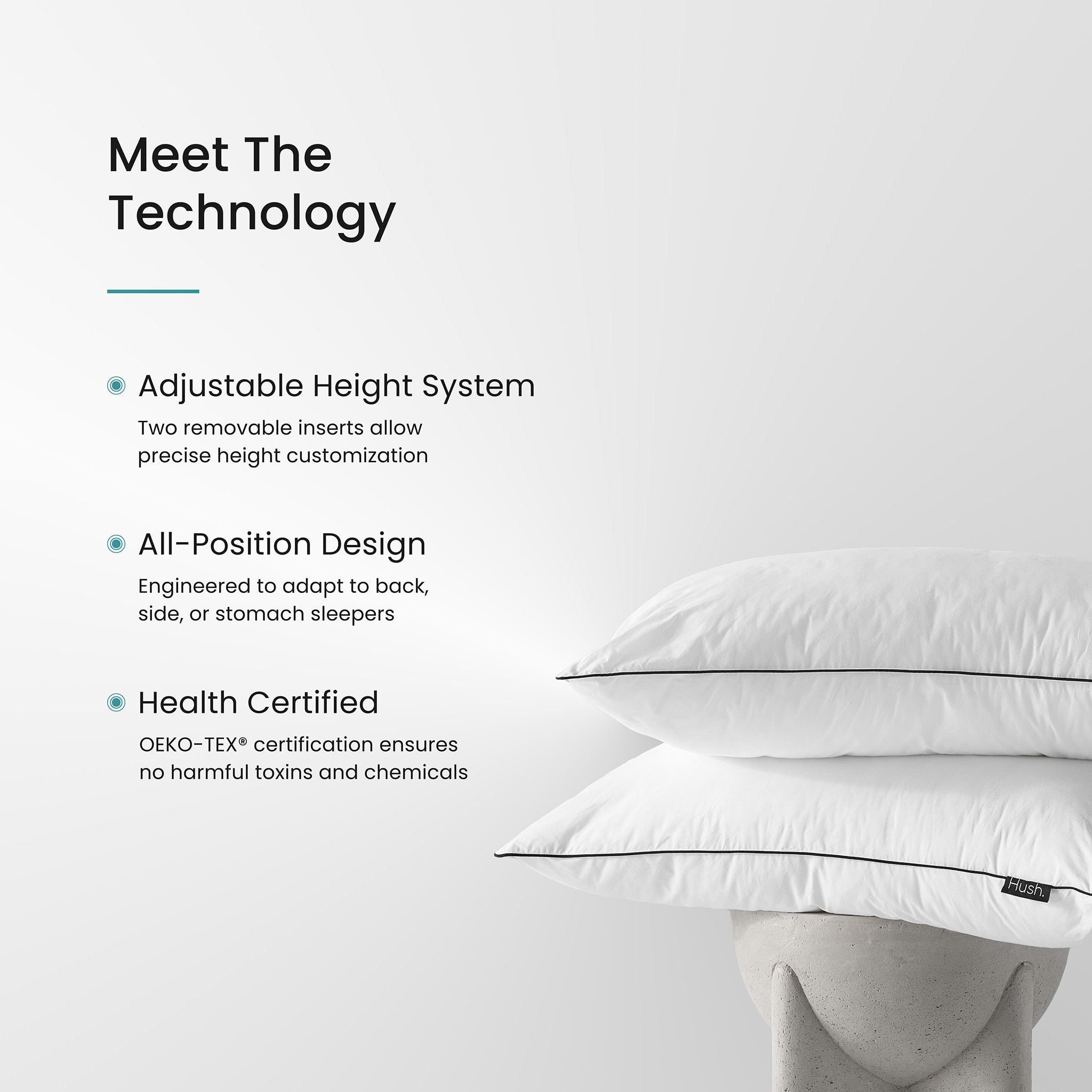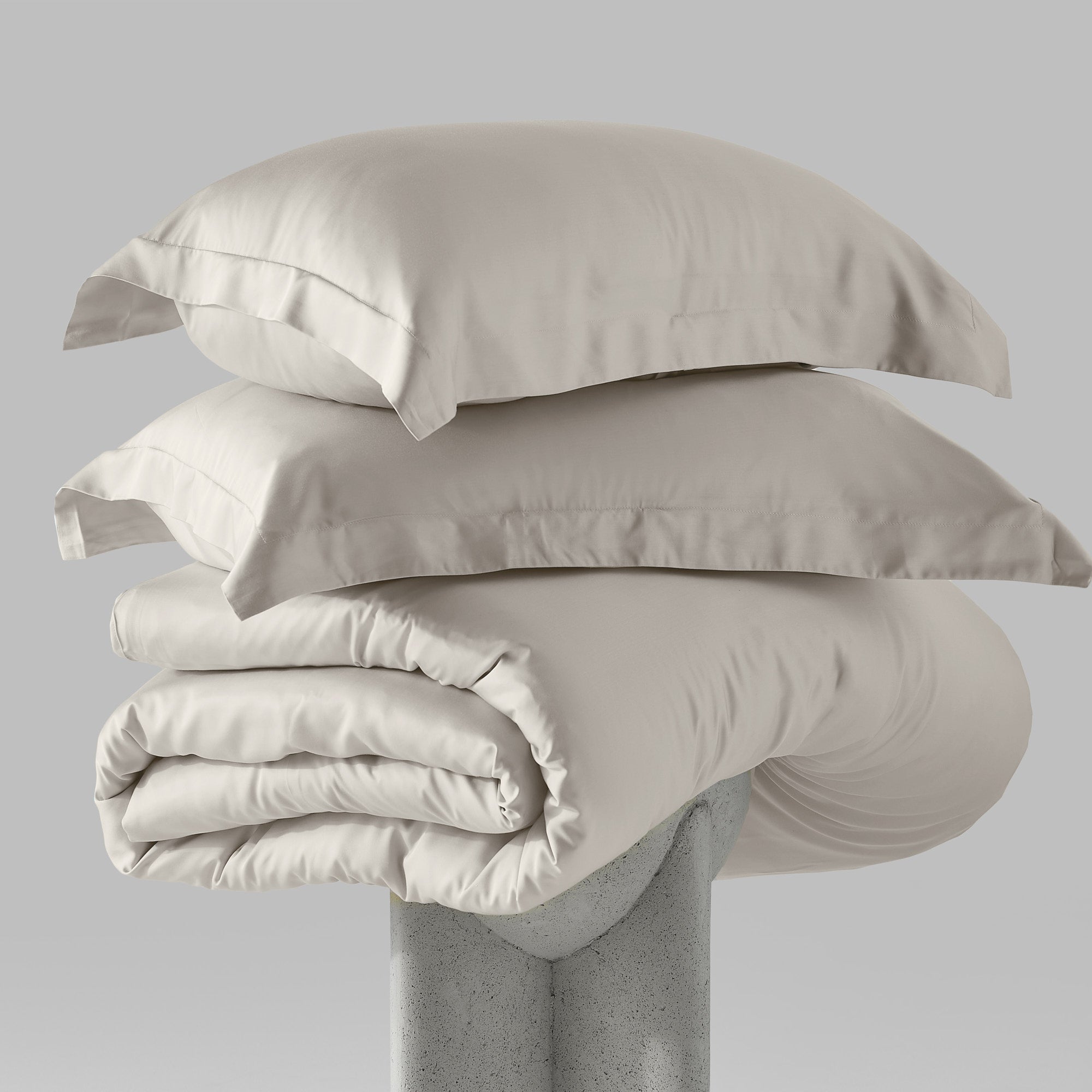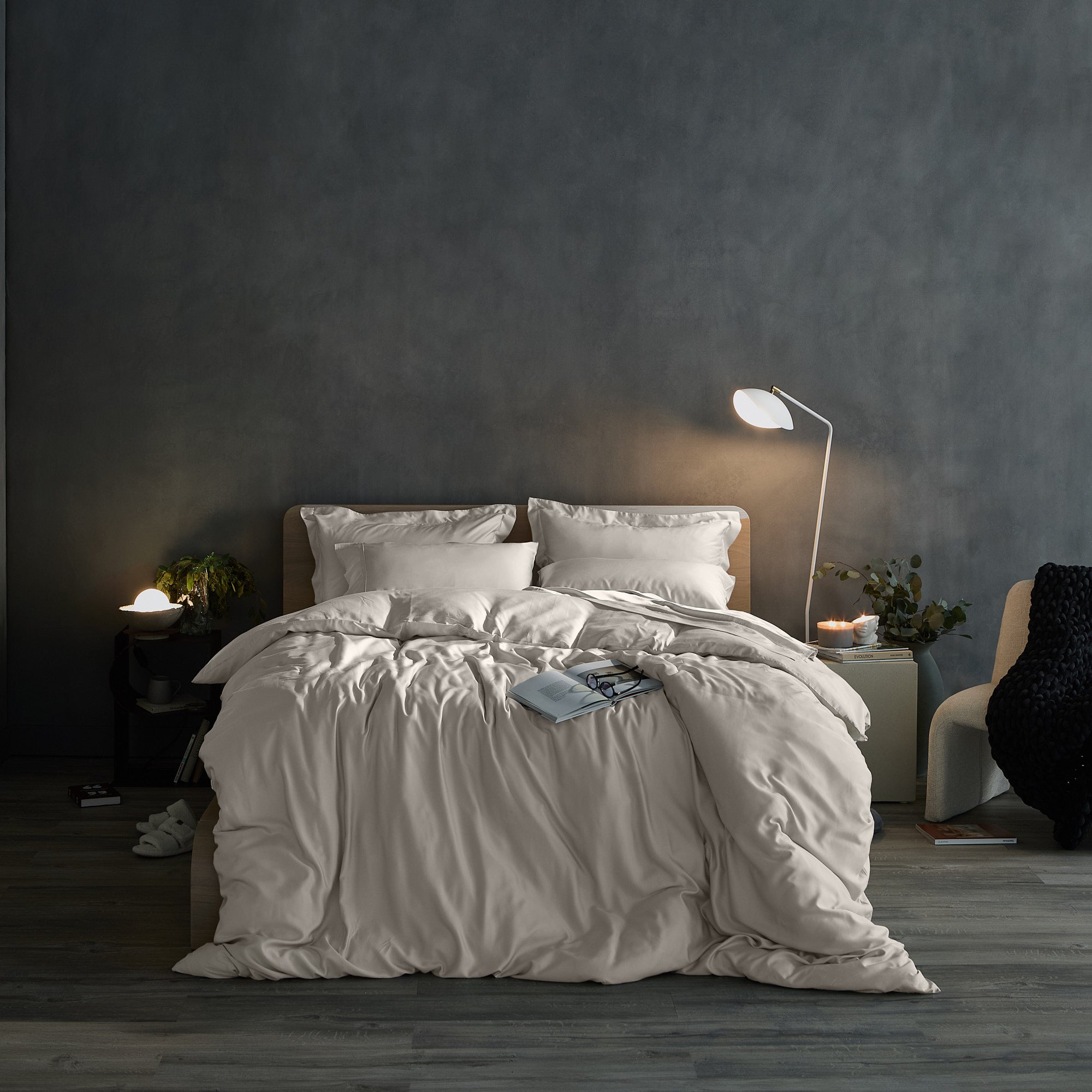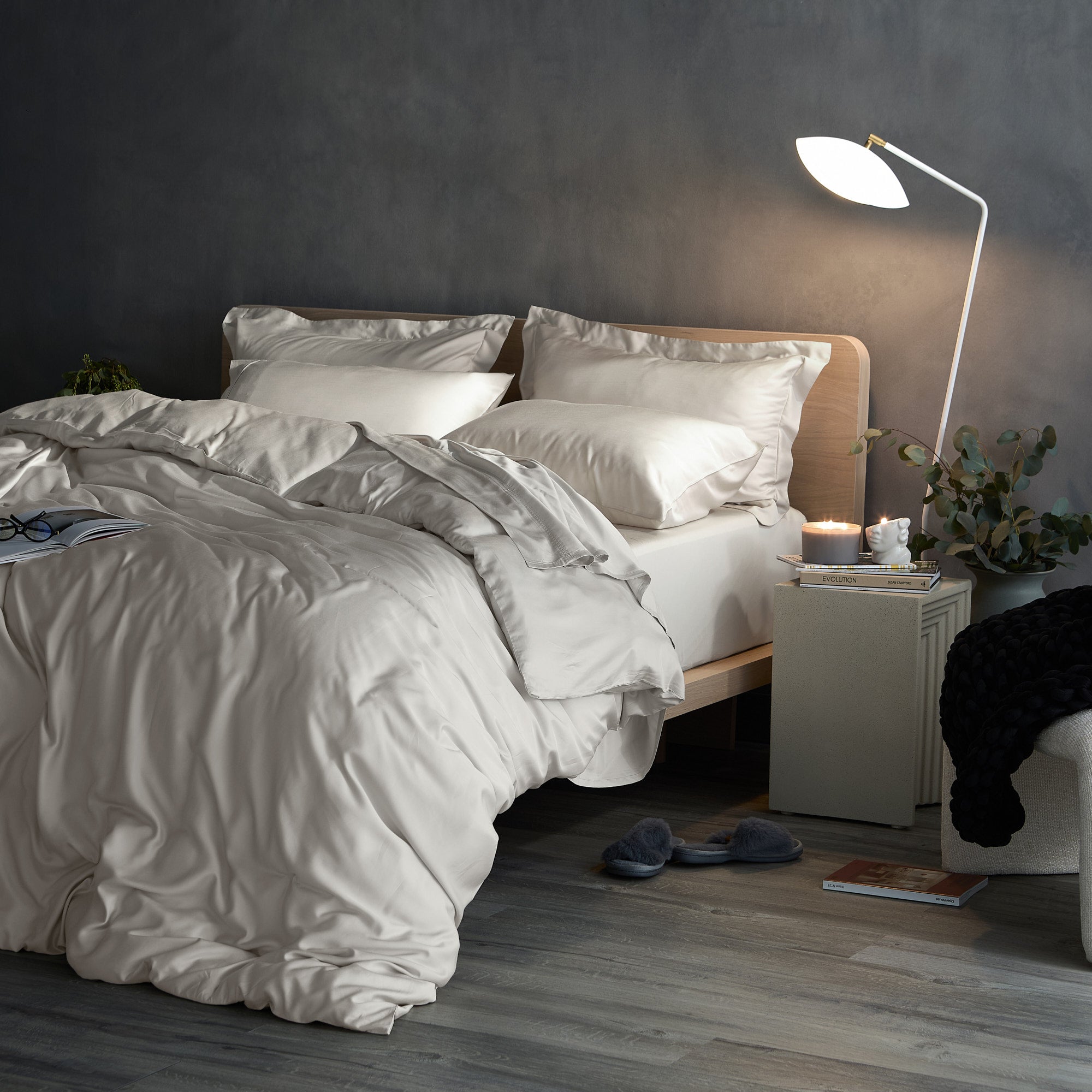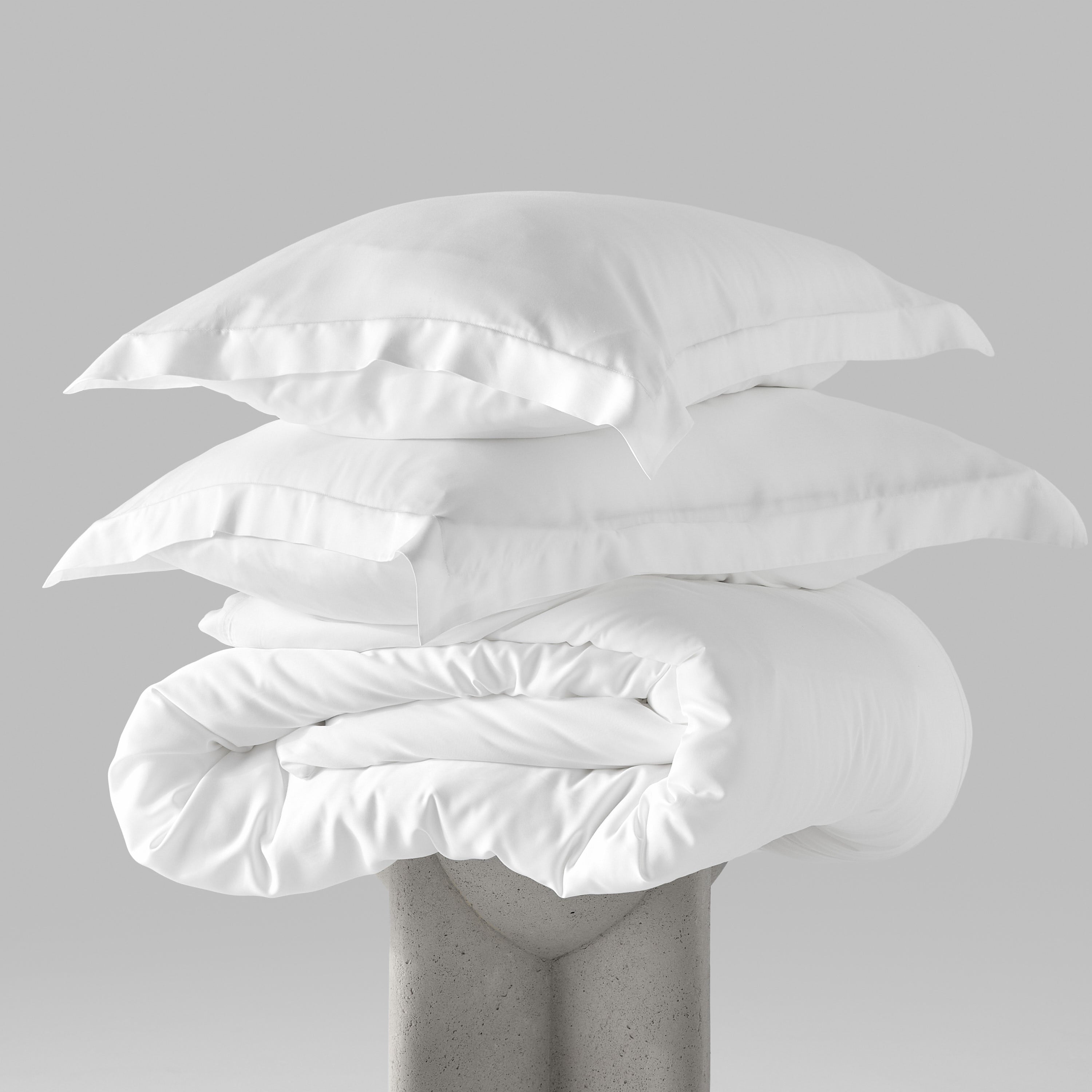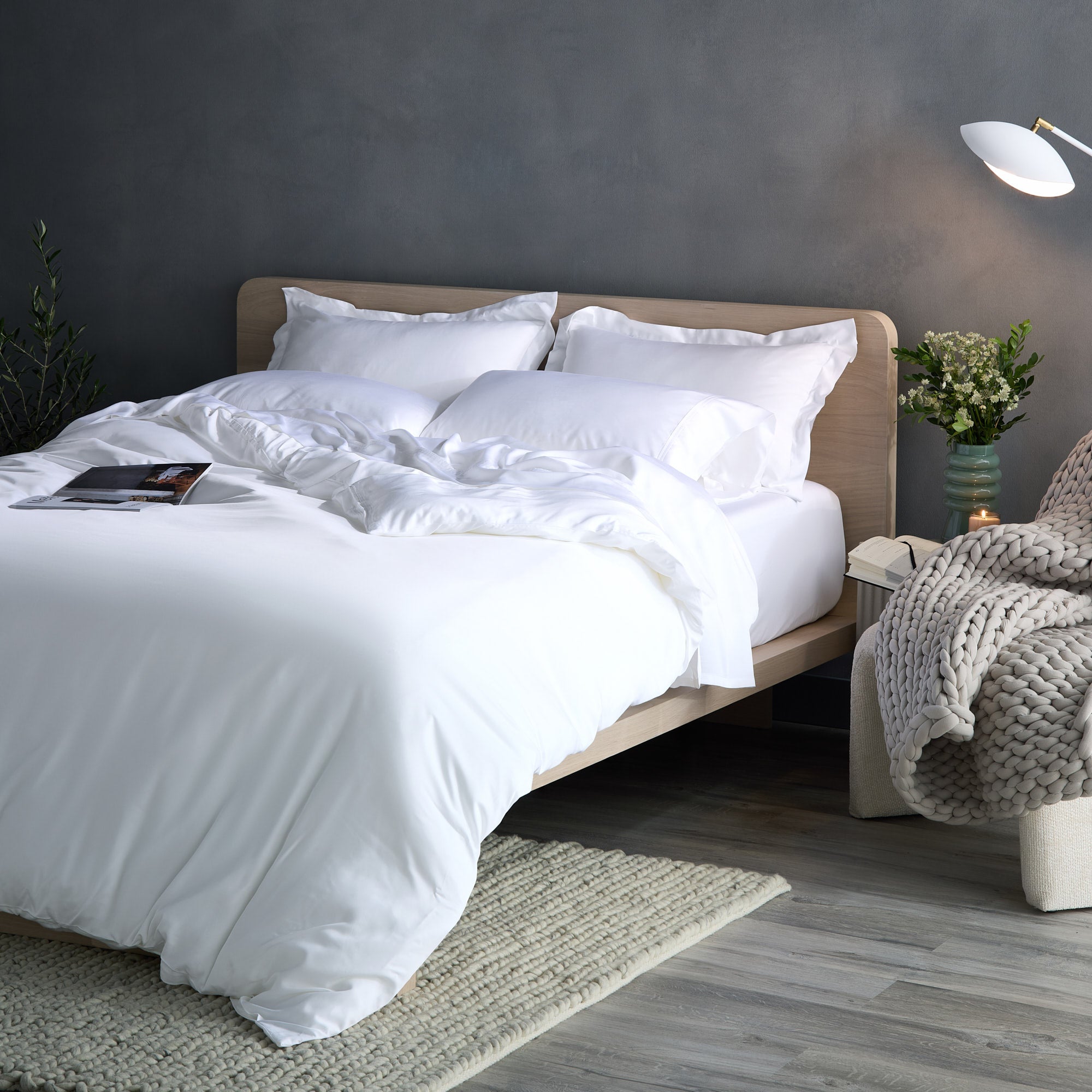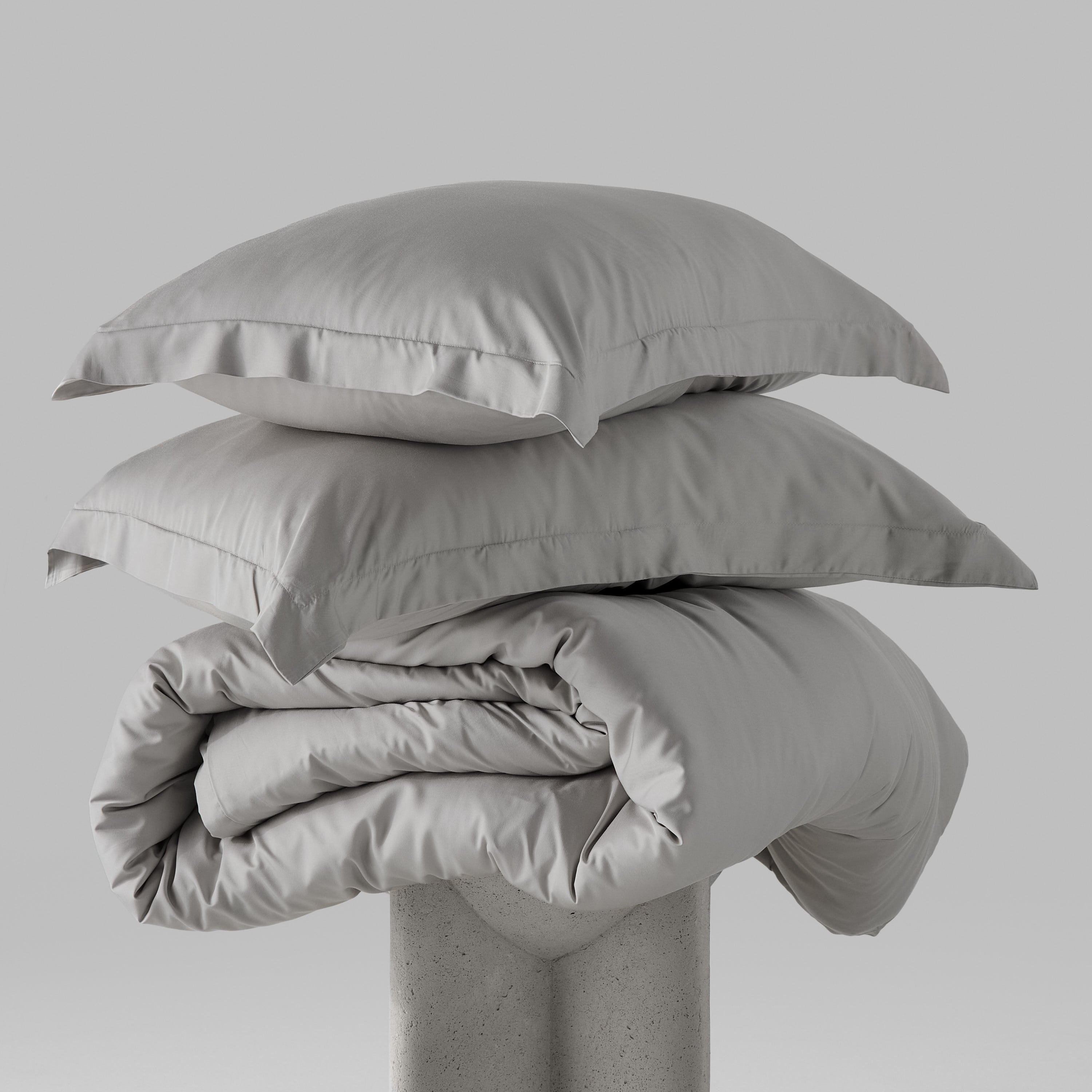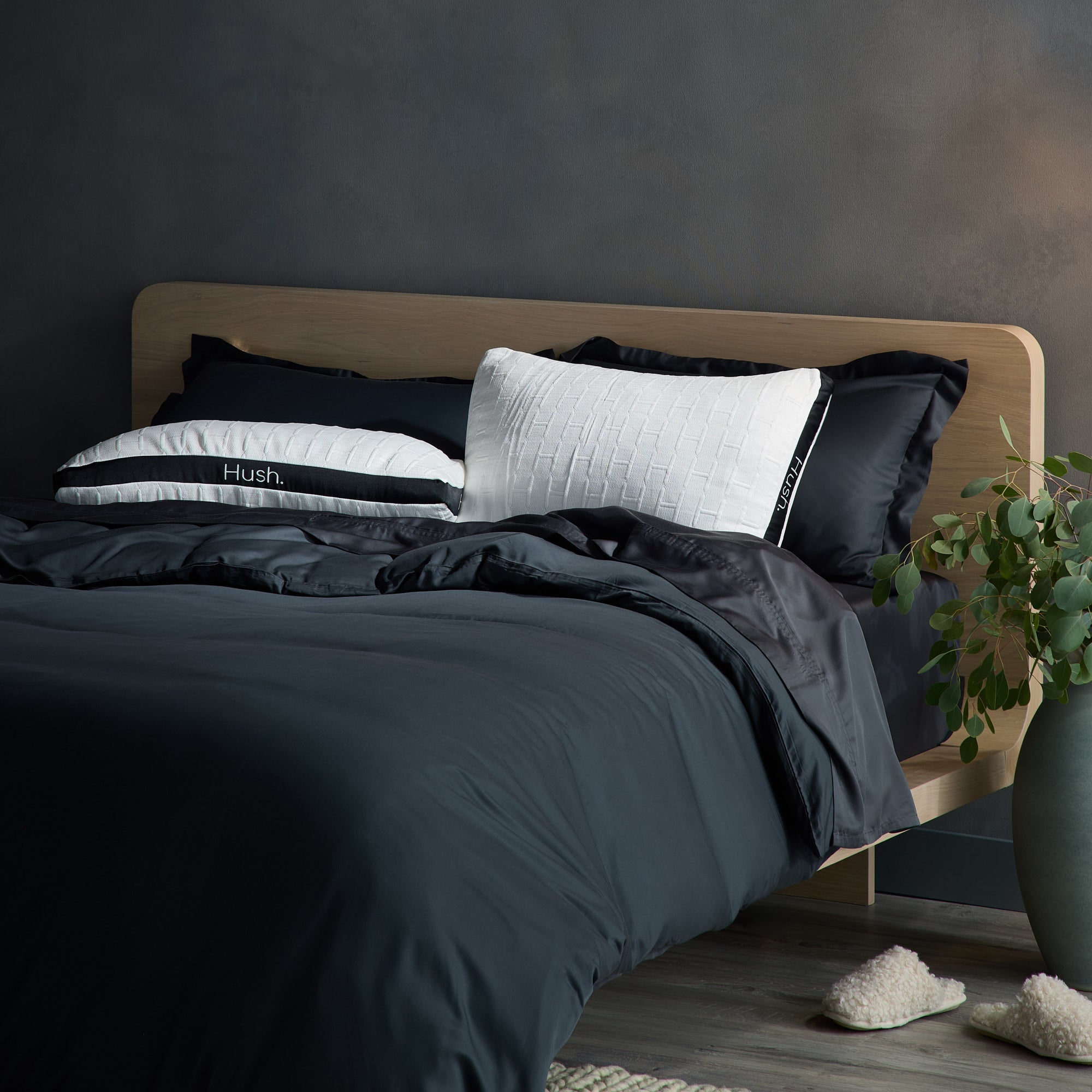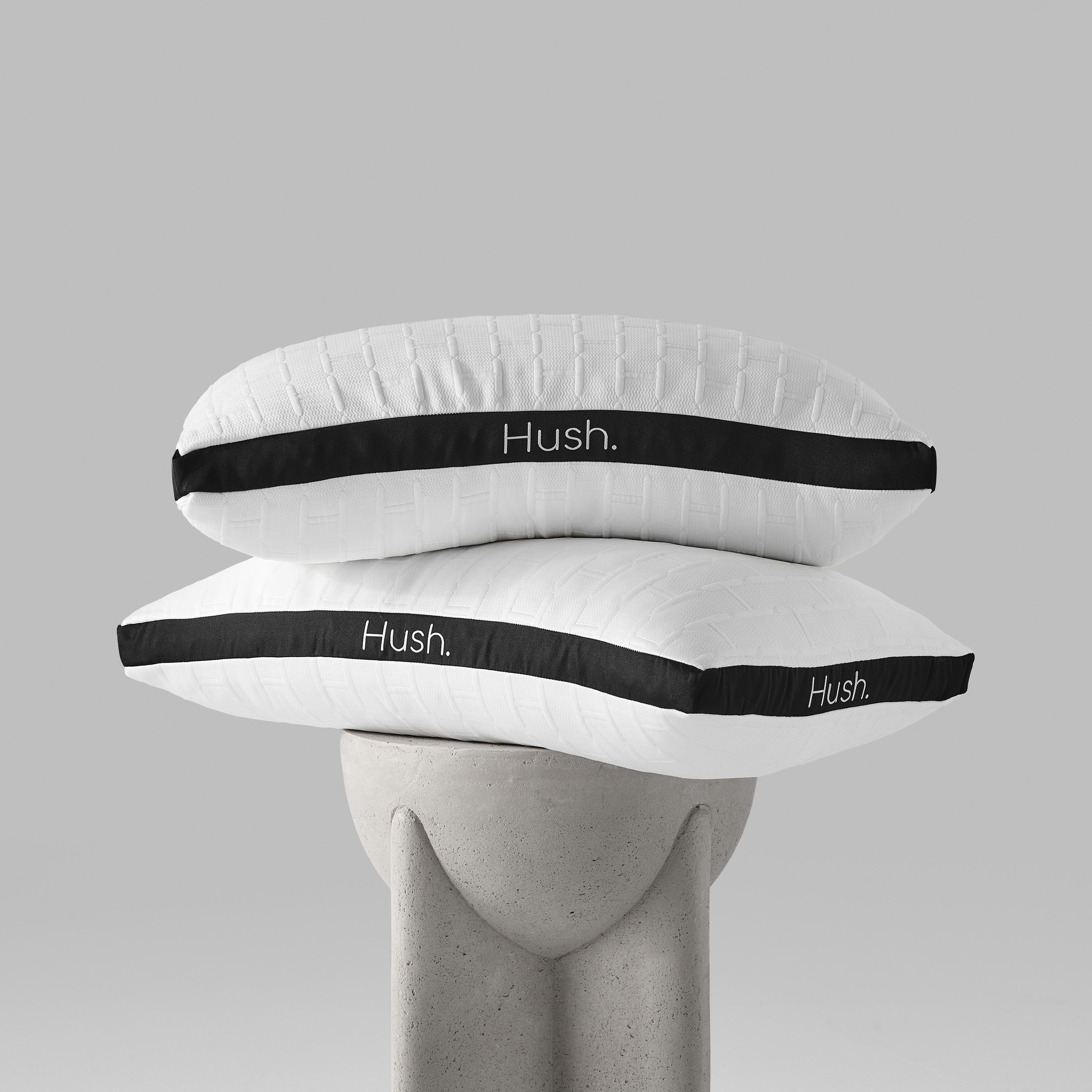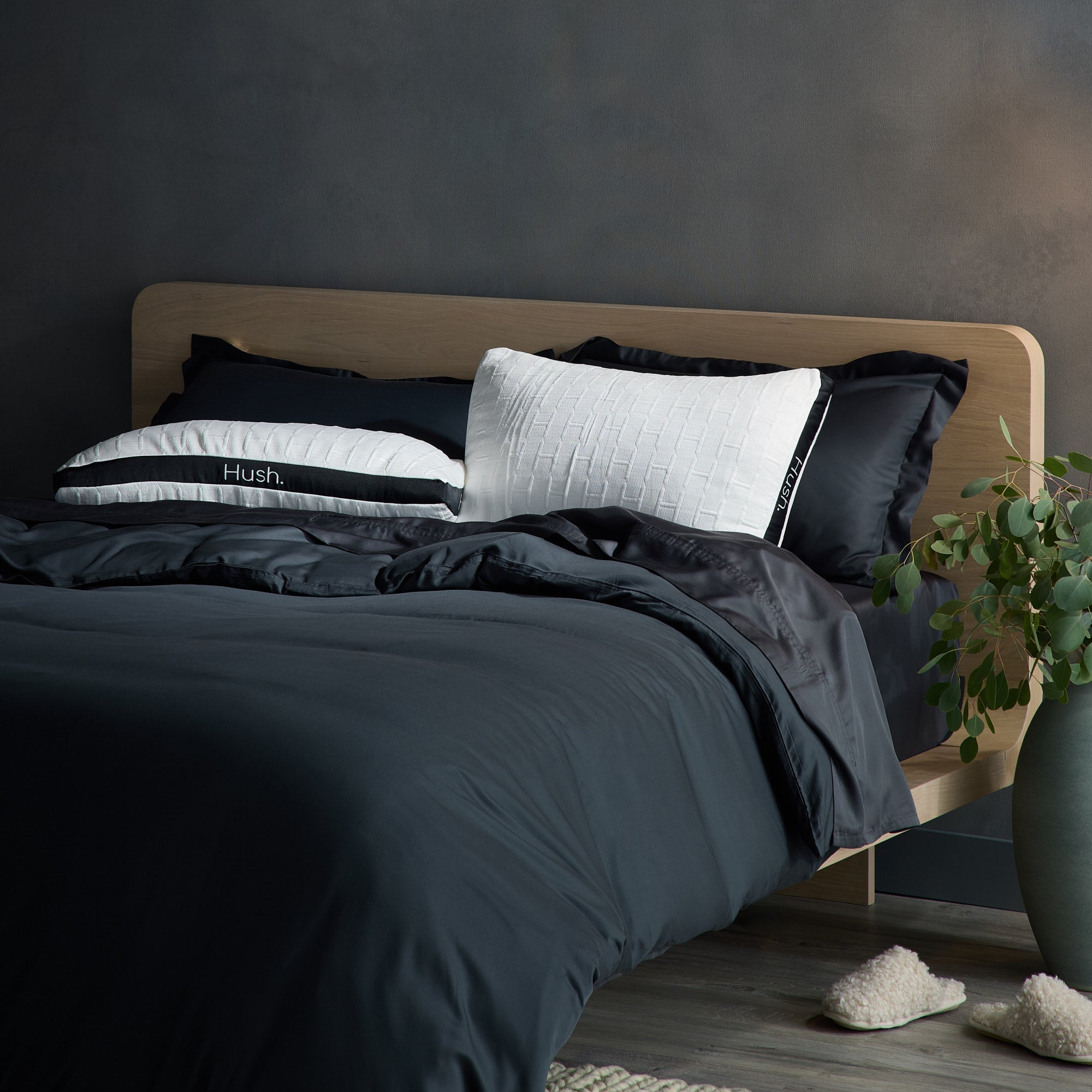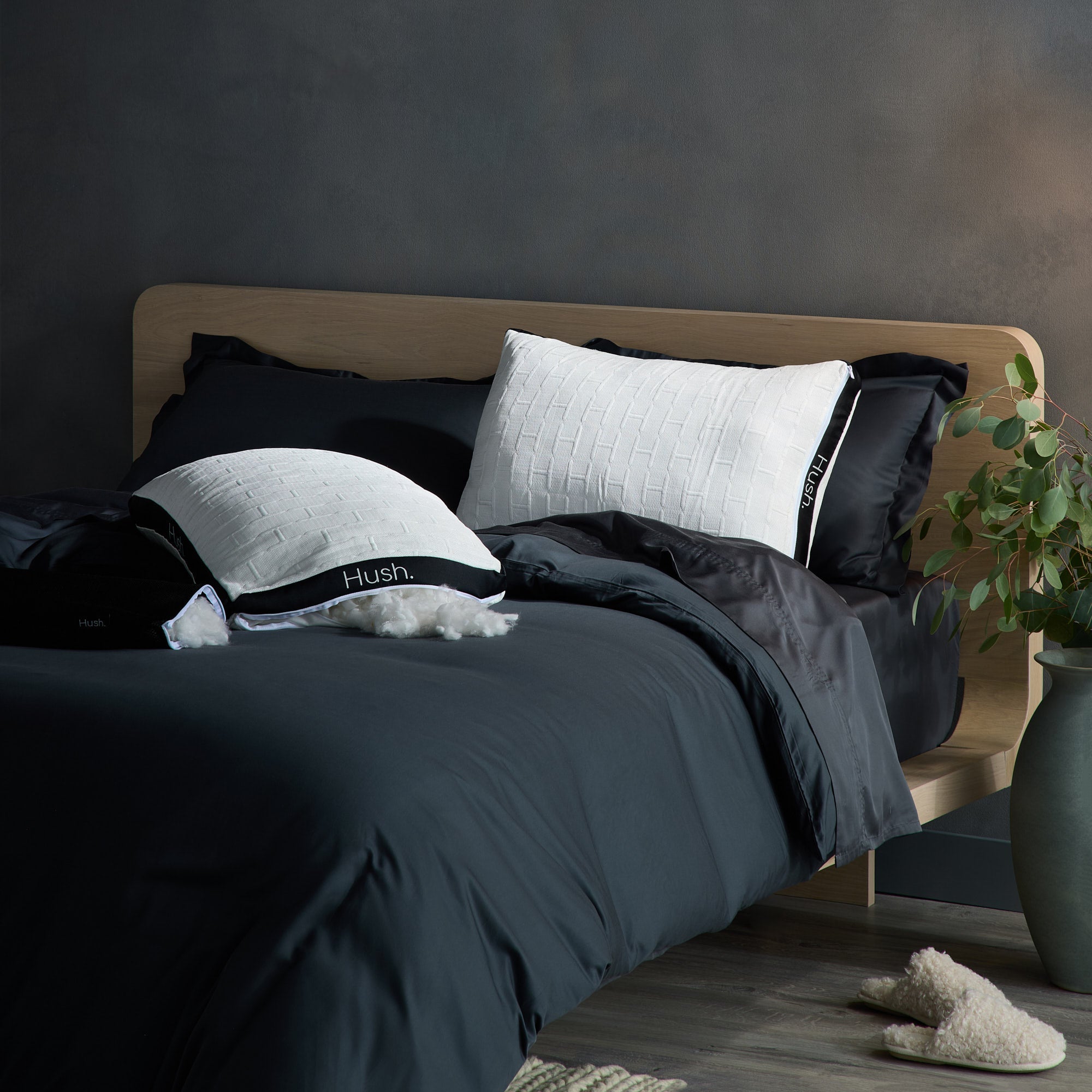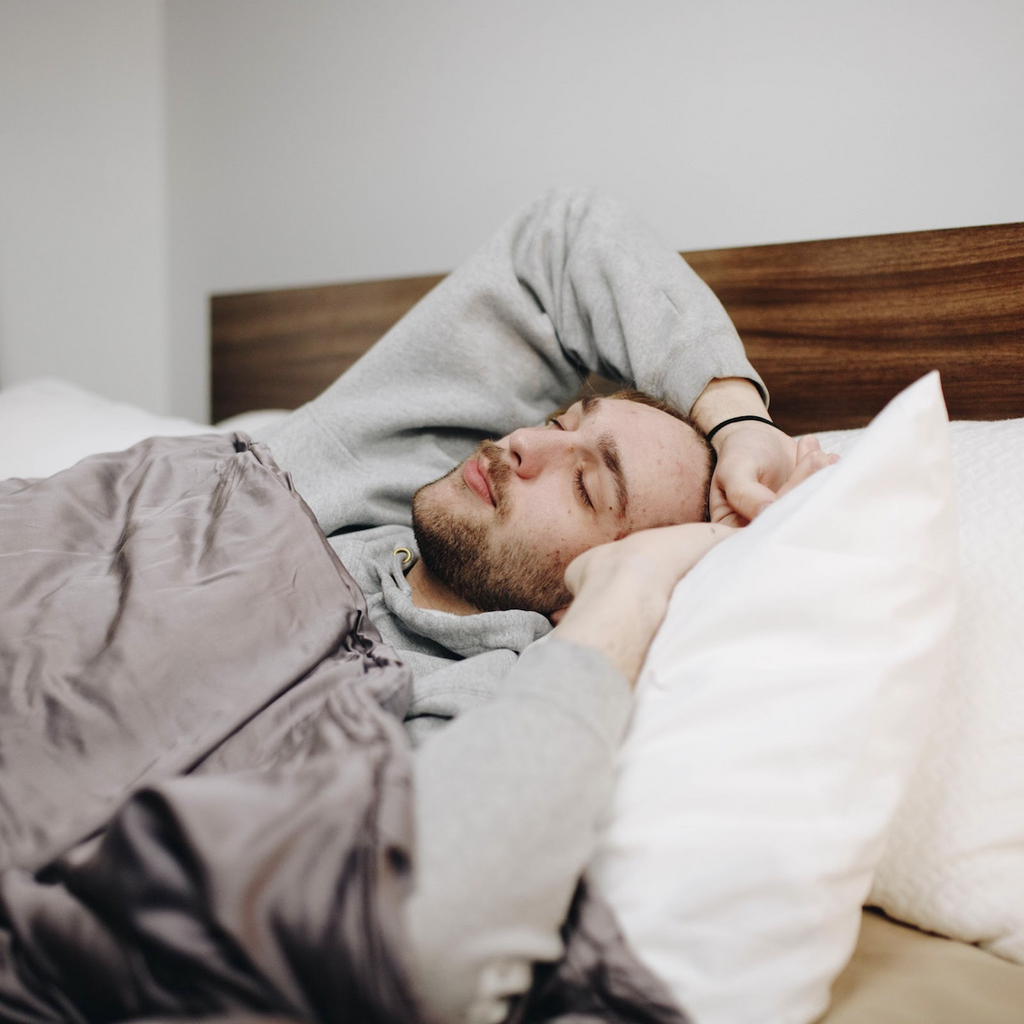
For most people, the best sleeping position is whichever one helps them fall asleep quickly and deeply. Here’s the thing though: Some sleep positions can do us a disservice in the long run. They make us wake up with kinks, soreness, or just plain crankiness. Many health experts believe sleeping on your back is one of the best ways to get deep, restful sleep because it maintains spinal alignment and reduces excess pressure on sensitive points.
Sleeping in a new position can be difficult for some people. It can take a few days for the new position to become totally comfortable and for us to not roll back into a different position while we’re sleeping.
Not a back sleeper yet? Read on to learn how to train yourself to sleep on your back.
What Is the Best Sleep Position?

While back sleeping tends to have more advantages for most people, sleep experts say you need to take your biggest sleep concerns (ex., snoring, pregnancy) into account to determine which position can grant you better sleep.
Read on to learn the health benefits of each sleeping position: back, side, or stomach sleeping.
Back Sleeping
Back sleeping is one of the more popular sleeping positions because it helps keep your spine in a neutral position. Proper alignment of your spine means you wake up with fewer aches and pains in your back, neck, and shoulders.
Back sleeping tends to promote:
- Spine alignment
- Sinus relief
- Tension headache relief
- Chest pressure and compression reduction
- Sleep apnea symptom reduction
- Neck pain reduction
- Wrinkle and crease reduction: Dermatologists love this position because you aren't pushing your face into a sheet for eight hours straight.
- Acne reduction: Back sleeping also keeps your delicate facial skin away from your sheets, so you don’t rub any dirt or oil into your pores.
However, back sleepers may be more likely to encounter:
- Snoring
- Higher chance of acid reflux (heartburn)
- Sleep apnea
- Heart strain for pregnant women, especially in their third trimester
If you want to learn how to train yourself to sleep on your back but are worried that your lumbar might not be supported, try placing a small pillow under your lower back.
Side Sleeping
Side sleeping is one of the more common sleep positions. It can allow for joints to have less pressure on them, giving relief to sore body parts. Side sleeping may also help with:
- Sleep apnea relief
- Snoring relief
- Wellness during pregnancy: Sleeping on your side while pregnant reduces the weight of your belly pressing down on your organs. Sleeping on your left side keeps blood flow optimal.
- Lower back pain reduction
Side sleepers should be careful of:
- Shoulder pain from increased joint pressure
- Wrinkles from sheets pressing into the face
- Gastroesophageal Reflux Disease, or GERD (when sleeping on your right side)
Side sleepers can sometimes get sore hip flexors, especially if they sleep in the fetal position. In this case, a pillow or blanket between the knees can help reduce the pain.
It's also important for side sleepers to have the right pillow. The pillow needs to follow the natural curve of the sleeper's neck to maintain proper neck and spine alignment. The right mattress, like a memory foam, can also help reduce the pressure on your shoulders, so they may not be as stiff when you wake up.
Stomach Sleeping
Stomach sleeping is the least popular sleep position. While it can help with snoring relief, stomach sleeping may promote:
- Lower back and pelvic girdle pain during pregnancy
- Wrinkles
- Back pain
- Neck pain
Learning to sleep in a different position will help with some of the negative effects of stomach sleeping.
How to Train Yourself to Sleep on Your Back

According to the Sleep Foundation, learning how to train yourself to sleep on your back can help you get a better night’s rest. If you struggle with any of the listed conditions, back sleeping can help alleviate them.
It can take several days to train yourself to sleep on your back, as our bodies have a tendency to move back into learned positions when we fall asleep.
When you realize you’ve changed your position, just roll to your back. Eventually, you’ll stay on your back for most of the night.
If you’re ready to learn how to train yourself to sleep on your back, pillows and weighted blankets can be helpful tools.
Pillows
Pillows can help bolster the rest of your body, like your knees and sides, to keep you supported throughout the night.
Regular Pillows
Putting a regular pillow under your knees while you sleep on your back can promote lower-back alignment. It can also ease back tension by keeping the natural curve of your spine.
You can also use regular-sized pillows to build a wall along the sides of your body. Even just the light pressure of a pillow beside you will help keep you from rolling over onto your side and stomach.
Body Pillows
You can also use body pillows to train yourself to sleep on your back. Because of the size of body pillows, it is more difficult to roll over them to change positions while you sleep. Put one body billow on either side of you to form “bumpers.” The bumpers will help you stay on your back while you sleep.
Weighted Blanket
Sleeping under a weighted blanket can also help you sleep on your back. The heaviness of the blanket makes it a little more difficult to roll over. That increased resistance will encourage you to stay in a comfortable back position.
It’s important to remember that you’re not trying to immobilize yourself. Instead, you’re making it a little more difficult for you to flop around and change positions.
There are additional benefits to using a weighted blanket for back sleeping. The increased pressure of the blanket uses deep pressure stimulation. This stimulation causes your body to take deeper, slower breaths. These fuller breaths, in turn, cause your heart rate to slow and increase serotonin output. You relax more and get more restful sleep.
Tip: Look for a blanket that is around 10% of your body weight for safety and maximum benefits.
Other Tricks for Sleeping on Your Back
Using pillows and weighted blankets are great places to start to learn how to train yourself to sleep on your back. There are a few other things you can do too, according to Sleep Advisor.
Elevate Your Head
By lifting your upper back, shoulders, and head a little bit, you reduce your body’s natural tendency to roll over. Keeping your upper back elevated also makes sure your spine is aligned, so you won’t wake up with a sore neck and back. If you want to splurge on an adjustable bed, they can also help you keep your upper body elevated enough to not roll over.
Sleeping Starfish
When you sleep in a starfish position, you spread your arms and legs out diagonally from your body, essentially taking up the maximum amount of space you can.
In this position, your limbs are away from the center of your body, making it more difficult to roll over. It is also often very comfortable for the person sleeping in it — but it may be less than ideal for your bed partner.
Maximize Your Wellness Through Back Sleep

If you know how to train yourself to sleep on your back, you can benefit from better spine alignment and fewer skin creases and wrinkles. You're also more likely to have a good night of sleep when you keep your body in a more neutral position. This reduces the chance of waking from kinks or soreness. If you’re pregnant or have other conditions, like sleep apnea, talk to your doctor about the best sleeping positions for you.
A weighted blanket adds to the sleep benefits by making your sleep deeper and more restful. A Hush 2-in-1 blanket bundle allows you to use the same inner weight with a cover that helps moderate your sleeping temperature.
